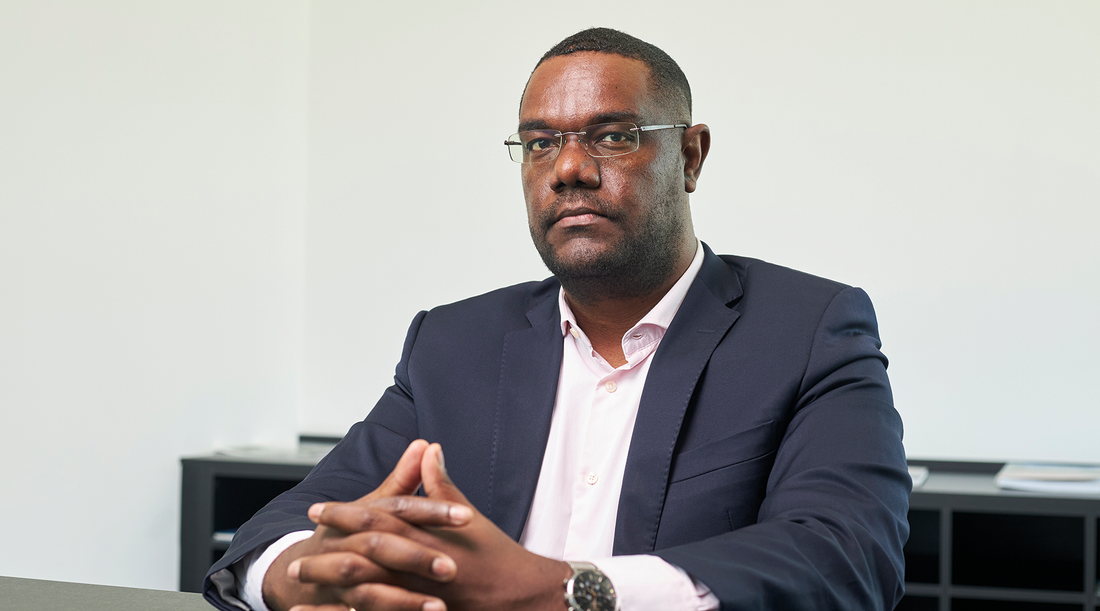
WANDERLEY RIBEIRO, PRESIDENT OF THE ANGOLA AGRICULTURAL LIVESTOCK ASSOCIATION (AAPA)
Share
"Angola has an important food responsibility on the African continent and must assume it."
President of the Angolan Agricultural and Livestock Association, Wanderley Ribeiro is the voice of the business community for the agricultural sector. He spoke to Villas&Golfe about the current state of agribusiness in Angola and the importance of positioning the country on the international stage, developing ideas, and applying scientific knowledge.

How do you describe the current situation of agribusiness in Angola?
Over the past 50 years of architecting and building our economic sovereignty, agriculture has received little attention and, consequently, played a minor role in this process. The dynamics of our economy have proven unsustainable for this model, particularly due to the growing risks of food (in)security, forcing a review and in-depth reflection on the role of agriculture and its influence on a set of macroeconomic variables that directly impact citizens' lives. Since 2015, new approaches have emerged, in a joint effort between the government and business leaders seeking to find a platform for understanding that will enable the sustainable development of agribusiness in Angola. The scale of the effort undertaken is not yet compatible with the anticipated results; however, the dynamics reveal a new approach to investing in and committing to the sector.
What is AAPA's role in the agricultural sector?
The Angolan Agricultural and Livestock Association was founded in 2016 in a challenging context for the business community and the sector. First, to promote internal alignment among producers and, second, to ensure the defense of the industry's interests with other entities, particularly the government. Broadly speaking, the AAPA's corporate purpose is to contribute to the promotion and development of corporate agricultural activity in Angola, defending and promoting the common interests of producers both domestically and internationally. Although we are a business representative association, our strategic approaches are cross-cutting and inclusive, always observing the impact and dynamics of measures on family farming, as we recognize its role and relevance for the country.
What kind of institutional and government support has AAPA received?
We have a fruitful platform for consultation with the Government, which allows us to interact with key public entities and their leaders without bureaucracy. Having this space where our ideas and opinions can be presented and debated gives us credibility with our members. Naturally, not all topics we bring to the consultation table receive timely acceptance or treatment, and there are times when the regulatory body's understanding differs from ours. Even so, we recognize these divergent opinions as opportunities for learning and cooperation.
What recent achievements do you highlight in Angolan agriculture and livestock farming?
The main achievement is our ability to place agriculture and livestock on the country's priority agenda, both in relation to the need to strengthen food security and the desire for economic diversification. Some measures I consider relevant are, for example, the establishment of the National Food Security Council in 2024, and in 2025 the launch of the National Strategy for Food and Nutrition Security (ENSAN II); the launch of the National Strategy for the Reconversion of Agrifood Systems 2026–2035; and the approval of Notice 10 of the National Bank of Angola, a financing instrument for the real economy under special conditions. These are instruments and measures that express political will, but we have had difficulty converting these measures into results and impact on the scale the country needs. This is where we must apply our best capabilities to identify the cause and change our approach.
What statistics show the evolution of the sector in recent years?
Official MINAGRIF data points to continuous growth since 2019 across all sectors, a trend also reflected in the 6% growth the sector experienced in the 2023/2024 harvest. Naturally, for those traveling through the interior of the country, this growth is noticeable, especially in the increase in production areas. Five years ago, I was traveling the 500km route from Luanda to Luquembo and saw only two farms producing; today, along the same route, I already count 10 production units.
In livestock farming, the scenario is no different, with an increase in cattle, pig, and poultry herds, and the importance of goat herds throughout the country is undeniable. In livestock farming, data analysis requires greater care due to some discrepancies between sources. However, FENACOOPA (the National Federation of Livestock Cooperatives of Angola) advocates for an increase from 3.2 million cattle in 2020 to 5.8 million in 2025. Indicators are trending positively, but still well below the country's actual needs.
What are the main difficulties and shortcomings of agribusiness today?
We need to address what we've been ignoring. The long-awaited green revolution in agriculture isn't just about land, but also about the germination of ideas and the application of scientific knowledge. Some challenges I consider structural for the sector's development include a clear definition of the National Agricultural Development Plan; the review and integrated definition of the public policy framework for agribusiness; the availability of streamlined financing; customized financial instruments tailored to the different agribusiness segments and compatible with the sector's level of maturity; strengthening institutional capacity; and a serious commitment to the sector's workforce development model and strategy.
In what products or crops is Angola already self-sufficient?
The roots and tubers category in the Ministry of Agriculture and Forestry's Agricultural Campaign Report (RCA) represents our largest national production item, with just over 13 million tons in the 2022/23 agricultural season, of which cassava accounts for 81%. These indicators place Angola as the 4th largest cassava producer in Africa. Angola's share of the global banana market is small, yet bananas represent our best case study and success story in the field of food exports. It is estimated that in 2023, Angola will have exported approximately USD 10 million worth of bananas, in a global export market worth USD 14 billion.
How does Angola position itself on the international agribusiness scene?
Angola has a significant food responsibility on the African continent and must assume it. A brief comparison of Angola with the largest African producers of corn, wheat, soybeans, and rice allows us to understand how we compare to the continent's benchmarks in production volume, and the indicators are not encouraging. This situation reveals the magnitude of the opportunity and the commitment that must be made, especially in the allocation of financial resources. The African Continental Free Trade Area (AfCFTA) will require us to be more efficient in our operations. Depending on our level of preparation, the AfCFTA can represent an opportunity or a threat; both require the best of our capabilities to deal with this new reality. In the ranking of agricultural production and productivity, we currently have little to offer compared to South Africa, Nigeria, Kenya, Egypt, and others.
What initiatives exist to defend and promote national production?
There are a number of institutions (FADA, FACRA, BDA, FGC, REA), instruments and programs (Notice 10, PRODESI, PDAC, MOSAP, increased customs duties, etc.), and specific legislation aimed at defending and promoting national production. These institutions and instruments are appropriately characterized to serve specific agribusiness segments (production, logistics, trade, etc.) through specific products. This is a gradual adjustment we have observed over the last 10-15 years, seeking to align the instruments with the realities of the country and the beneficiaries. I believe we are making significant progress in this area. It is necessary to strengthen the capacity to provide technical assistance to producers through public-private partnerships and allocate financial resources to these programs, which must be sized and scheduled according to the country's real needs and the goals to be achieved.
What expectations are there for agribusiness in the next 10 years?
If we don't address what we've been ignoring and address the underlying problems, we'll simply grow without necessarily developing. Assuming we're all committed to this cause and will apply the best of our capabilities and resources to its full potential, we'll see over the next 10 years: the consolidation of major investments still in the implementation phase; the entry of new players into the sector; the strengthening of the institutional capacity of the Ministry of Agriculture and Forestry; and a rigorous commitment to research and development. The development of the Lobito Corridor will have a unifying effect around its central axis. I also highlight family farming's commitment to value-added and income-generating crops.
Are you a farmer yourself? How would you describe your journey to becoming AAPA president?
I began my more intense relationship with agriculture in 2015. For three years, I experimented with the production models I believed best suited my context, starting with fruit and vegetable production (HF). My early years in agriculture were quite solitary, a period managed by a trial-and-error approach, and this experience took its toll. After a few years, I felt the need to connect with others experiencing the same challenges as me and thus resonate with not only the problems but also the proposed solutions for the sector on a different frequency. That's when associativism emerged as a solution. At my company, I had to review my business model and area of operation, shifting my focus in 2018 to cereal production, with a particular emphasis on rice. We developed the business model best suited to the challenge, established partnerships, and moved forward with the operation, which has grown year after year since 2019, having sown 500 hectares of rice in 2024, 25% of which were under flooded conditions. In parallel, in 2017, I ventured into co-founding one of the first agritech startups in the country, another pioneering mission full of challenges. The reality is that this company is now a benchmark in the field of agricultural development and technical assistance, with 25 employees, a presence in 5 provinces, and over 10,000 productive hectares under our coordination and supervision. My relationship with AAPA began in 2022, at the invitation of a group of leading entrepreneurs in the sector, who not only presented the challenge but also offered their support and support to make the vision a reality. I am currently nearing the end of my term, which runs from 2022 to 2025, and I believe we have made a good start in laying the foundations for the spirit of association within the agricultural sector.
